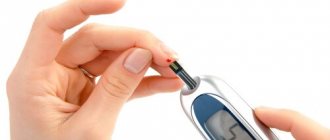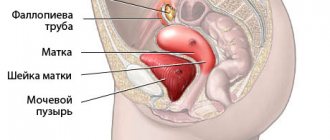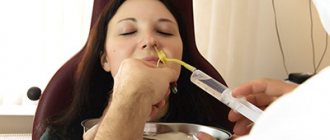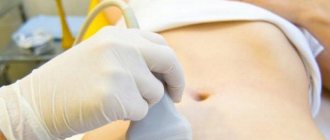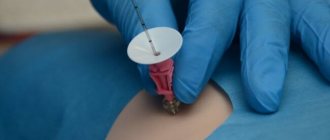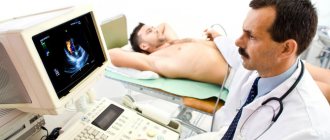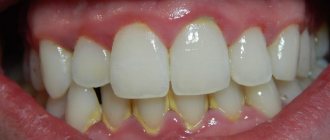Plasmapheresis is one of the most popular types of extracorporeal detoxification, aimed at changing the organic, gas or water-electrolyte composition of the blood substance through its chemical and mechanical treatment outside the body. Special equipment is required to carry out cleaning operations. Both qualitative and quantitative characteristics are subject to changes
Features of the procedure
The essence of the method involves the elimination (removal) of all elements contained in plasma. The most significant therapeutic effect is achieved when harmful substances are concentrated in the liquid component of the bloodstream.
Like any other medical procedure, plasmapheresis requires precise dosing of the amount of circulating plasma volume (CVP) taken. The calculation of the permissible BCP is determined for each patient individually using special tables, taking into account age characteristics, gender, and anthropometric data.
Depending on the amount of plasma removed in one procedure, there are several varieties of this method:
- low-volume plasmapheresis - up to 20%;
- medium volume - 20-50%;
- high-volume - 50-70%;
- plasma exchange (from 70 to 150%);
- massive plasma exchange - over 150% of the total CV.
Plasmapheresis: benefits and harms
The therapeutic effect of plasmapheresis is based on the following molecular mechanisms:
- Quantitative removal of various biomolecules: paraproteins, antibodies, breakdown products, exotoxins, nonspecific endogenous molecules, etc.
- Full or partial replacement of missing components by donors.
- The effect of the plasma filter membrane on the structures of blood cells (deplasmization of red blood cells, reduction in the viscosity of the filtered liquid).
- Acceptable placebo is the effect most expected in the treatment of chronic diseases.
At the same time, the simultaneous removal of more than 30% of the VCP from the body results in a stable, significant decrease in the concentrations of plasma proteins, coagulation factors, and immune antibodies that are useful for the human body. The restoration of these indicators occurs over a long period of time (at least 7 days). When about 50% of the central nervous system is removed in one session, the body has no reserves for self-recovery and ensuring the normal functional state of organs. Such conditions can be corrected by introducing donor components. Removal of more than 100% of the VCP cannot be corrected even by infusions of albumin and donor plasma; such conditions are difficult to tolerate by patients. Therefore, the plasma exchange procedure is carried out only in critical and life-threatening conditions.
Briefly about the main thing
However, let's return to plasmapheresis. Isn't it harmful to do it? No, it's not harmful. Once every six months or a year. This is completely normal. Especially in our time, when the poisoning of the body has become normal. How long does the process take? This depends on the volume of plasma removed. But the average time is about one and a half hours per procedure. Is there a possibility of catching some disease? We are talking about vector-borne infections: HIV, syphilis, hepatitis B and C - no. All consumables and instruments are sterile and disposable, and medical personnel undergo an annual medical examination. And now about the most important thing. Why is plasmapheresis so good? What functions does it affect? In order to understand the therapeutic meaning of the procedure, you need to imagine the ratio of blood and water in the body. Moreover, water is the most important factor here. Let's try to answer the question: if there is more water in a sponge in % than the sponge itself, what is in what? Water in a sponge and sponge in water? Why is that? Yes, because the volume of water in the body is about 70%. And only 12% is blood. Moreover, there the ratio of cells to the liquid itself is almost 1:1, that is, half (6%). Why is water in the body so interesting? First of all, by the fact that, having dissolved proteins, fats, carbohydrates, salts and microelements, this water began to be called intercellular and intracellular fluid and is the basis for all biochemical processes. The cell lives, absorbs various substances, processes, and throws out waste. Sometimes it dies and then it itself becomes waste. Where does the cell throw out “garbage”? And literally “out the window” into the intercellular space. From there it enters the lymph, from the lymph into the venous blood, and it delivers all the “nasty” to the kidneys, filtering and freeing the body from acids, salts and other things. Any inflammation increases blood viscosity. Is there a lot of inflammation in the body of a healthy person? Quite a lot. He doesn't notice them, but they are there. And the carriage of chronic infections, including sexually transmitted infections, can remain undetected for years. Therefore, as we develop and age, toxic products of metabolism and inflammation accumulate in tissues - all of them actively draw water from surrounding cells, aging them. Apparently, this is why plasmapheresis procedures most clearly manifest themselves in cosmetology, because the removal of toxic substances from the blood, and then from the intercellular space, produces a “rejuvenating” effect on the entire body, and not just on the skin. In the treatment of hypertension, allergies, bronchial asthma, diabetes mellitus, plasmapheresis is used and gives an amazing effect, from completely eliminating medications to replacing strong ones with more moderate ones. In our Clinic, we have been engaged in blood purification for many years: plasmapheresis, cytapheresis and ultraviolet treatment of blood and its components. We have gained a wealth of experience in the treatment of: rheumatoid arthritis, hypertension, furunculosis and phlegmon of soft tissues, drug diseases, acute and chronic allergic reactions, chronic fatigue syndrome. Also, blood purification gives good results in: vascular damage due to diabetes, complications of the use of corticosteroids in systemic diseases, chronic inflammation of the female genital area, problems with unfused sutures after operations, prevention of strokes due to increased blood viscosity, obliterating diseases of the blood vessels of the legs, excess cholesterol in the blood . MK CELT specialists work on very reliable and state-of-the-art imported equipment. For plasmapheresis and other procedures, we use the best highly efficient centrifugal method for separating plasma and cells. In this case, the patient feels calm and comfortable, and the procedure is tolerated painlessly. Perhaps someone will say that we do not have the lowest prices, but we all know that we are not such rich people that we can be treated for pennies. Health is expensive, and looking for cheap methods means risking your health. Start a new life today!
How is blood plasmapheresis done (varieties of techniques)
Gravity methods are based on the fragmentation of blood substance into formed elements and plasma, under the influence of accelerated sedimentation.
This method provides two options for plasmapheresis:
- non-hardware - carried out through the natural deposition of cellular structures;
- centrifugal, when blood separation is achieved by centrifuging a certain volume of it.
Modern clinics perform two types of hardware gravitational plasmapheresis:
- Discrete. Blood is taken from the patient into a special plastic container with a volume of 400-450 ml, followed by centrifugation of the resulting material, after which functional blood cells are diluted in a sterile solution for infusion and returned to the patient.
- Continuously - in-line. This technique involves the use of a special device for plasmapheresis (separator), thanks to which blood is simultaneously taken, separated and returned to the patient of non-removable components.
The most innovative method of plasmapheresis is membrane, carried out through a special membrane having pores with a diameter of 0.2-0.6 microns. This size of the passage hole allows you to retain blood cells and allow plasma to pass through without any problems. This technique is adapted for the removal of pathological gamma globulins and has proven itself well in the treatment of allergies. One of its varieties is cascade purification, which involves passing blood substance through two membrane filters.
Contraindications
There are relative and absolute contraindications to blood purification using plasmapheresis.
These include:
- critical and uncompensated conditions of the patient;
- surgical bleeding and potential sources of uncontrolled bleeding (erosions, tumors, ulcers);
- individual intolerance or a history of allergic reactions to one of the components of the procedure;
- infectious and purulent processes in the acute stage;
- hyperthermia of unknown origin;
- primary or secondary pathological disorders of hemostasis;
- anemia of various etiologies;
- hypoproteinemia;
- inability to provide peripheral or central venous access;
- period of pregnancy, menstrual bleeding in women.
3. Diseases for which plasmapheresis is an effective method
The main groups of diseases for which blood purification is effective:
- endocrine diseases (including diabetes mellitus);
- metabolic disorders of any origin;
- gastrointestinal diseases;
- infectious diseases of the kidneys and genitourinary system;
- autoimmune diseases and conditions associated with other disorders;
- allergies;
- lipid metabolism disorders, diseases of the vascular system;
- acute poisoning and chronic intoxication;
- skin diseases;
- urogenital infections;
- toxicosis and infections of pregnant women, Rh conflicts;
- somatic consequences of burns, radiation sickness, chemotherapy, heavy antibacterial therapy, alcoholism and drug addiction.
Side effects
Despite the undeniable benefits of plasmapheresis, the following conditions can sometimes be observed during the procedure or immediately after its completion:
- embolic lesions of small and large vessels;
- acute hypovolemia, manifested by a sharp decrease in blood pressure;
- acute hypervolemia, characterized by acute left ventricular failure (shortness of breath, respiratory failure, pulmonary edema);
- hemorrhagic syndrome;
- allergic reactions of varying intensity, up to anaphylactic shock;
- pyrogenic reactions;
- hypocalcemia (numbness of the limbs, tongue, lips).
At the same time, the frequency of complications during planned procedures, after all preparatory and diagnostic measures, is reduced to a minimum.
Need some advice?
OR CALL A DOCTOR
CALL!
+7
What device is used at the National Center of Surgery and its advantages?
At the National Center of Surgery, plasmapheresis is carried out using the latest Fresenius Kabi device - Fenwal Amicus Separator. The device is distinguished by an intelligent control system, which simplifies the procedure and increases its efficiency.
The shape and technical design of the device is much more comfortable for the donor (low noise level, single- and double-needle approach). The procedure time is reduced (less than 1 hour), has individual control of the anticoagulant supply. After entering the donor's data, the device itself will determine the maximum rate of blood return and the required dose of anticoagulant. This is especially important for patients with hypersensitivity to citrate (an anticoagulant).
Safety is determined by disposable consumables, which are sterilized by a special irradiation method. An intelligent control system allows you to manage the entire procedure. In case of violation of the procedure or any inaccuracies, the device gives a signal and relevant information that allows us to take immediate action.
The design and construction of the device fully complies with the most stringent international standards.
